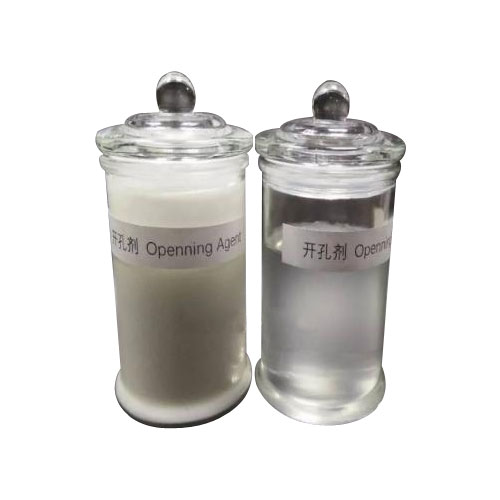- English
- Español
- Português
- русский
- Français
- 日本語
- Deutsch
- tiếng Việt
- Italiano
- Nederlands
- ภาษาไทย
- Polski
- 한국어
- Svenska
- magyar
- Malay
- বাংলা ভাষার
- Dansk
- Suomi
- हिन्दी
- Pilipino
- Türkçe
- Gaeilge
- العربية
- Indonesia
- Norsk
- تمل
- český
- ελληνικά
- український
- Javanese
- فارسی
- தமிழ்
- తెలుగు
- नेपाली
- Burmese
- български
- ລາວ
- Latine
- Қазақша
- Euskal
- Azərbaycan
- Slovenský jazyk
- Македонски
- Lietuvos
- Eesti Keel
- Română
- Slovenski
- मराठी
- Srpski језик
What types of high resilience foaming cell openers are there?
2025-06-12
High resilience foaming cell openers are mainly used in the production of foam materials, especially in foam plastics and rubber, to improve the resilience and openness of the foam. According to different ingredients and applications, they can be divided into the following categories:
Chemical foaming cell openers:
These cell openers release gas through chemical reactions, resulting in the formation of pores in the foam. Common chemical cell openers include:
Isocyanates: These cell openers can react during the foaming process to produce gas and open the pores.
Nitrites: They release gas through thermal decomposition or catalytic reactions, thereby producing a pore structure.
Physical foaming cell openers:
Physical cell openers cause gas release by physical means, usually including volatile solvents or gases.
Gas foaming agents: Such as carbon dioxide, nitrogen, air, etc., can promote the opening of foam cells through pressure changes or solvent volatilization.
Surfactant cell openers:
This type of cell opener promotes the formation of pores by changing the surface tension of the foam material. They help to improve the stability of the foam material and improve the uniform distribution of gas during the foaming process.
Natural and synthetic polymer cell openers:
Natural polymers: such as natural rubber, plant extracts, etc., form pores by changing the molecular structure during the foaming process.
Synthetic polymers: such as polyurethane, polyethylene, etc., which can provide good resilience and form a uniform pore structure in the foam.
These high-resilience foaming cell openers can be selected according to different application scenarios and needs, such as alleviating excessive foam density or improving its elasticity.




